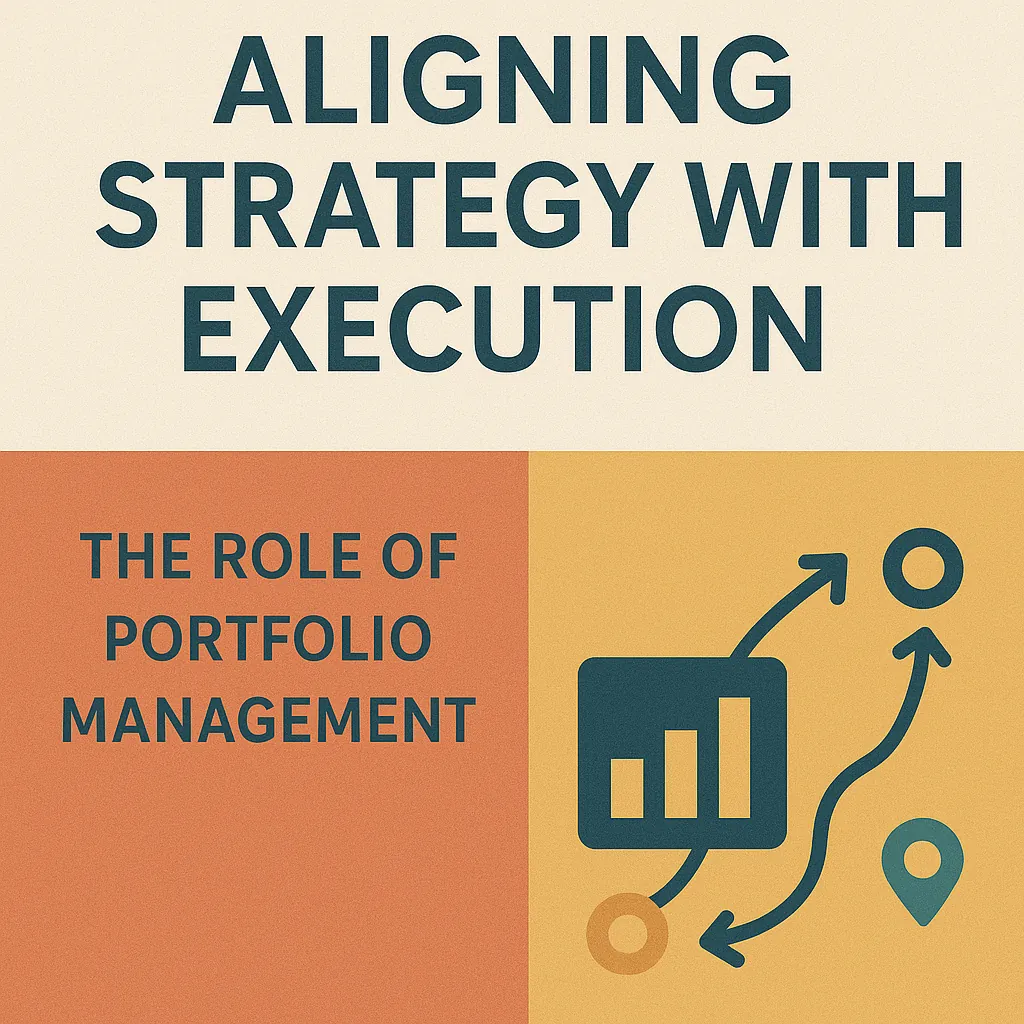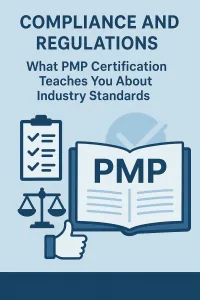Introduction: The Importance of Alignment
The alignment between strategy and execution is paramount for achieving organizational success. This section aims to elucidate the critical link between strategic objectives and project execution, emphasizing the role of portfolio management in this alignment.
Defining Strategy and Execution
- Strategy refers to the overarching plan that outlines an organization’s long-term goals and the means to achieve them. It encompasses the vision, mission, and objectives that guide decision-making and resource allocation. In project management, strategy serves as the foundation upon which projects are initiated and prioritized, ensuring that every effort contributes to the broader organizational goals.
- Execution, on the other hand, involves the implementation of projects and initiatives that translate strategic plans into tangible outcomes. It encompasses the day-to-day activities, resource management, and performance monitoring necessary to deliver projects successfully. Effective execution ensures that strategic objectives are met within the defined constraints of time, budget, and quality.
The Role of Portfolio Management
Portfolio management acts as a vital bridge between strategy and execution. It involves the centralized management of one or more portfolios to achieve strategic objectives while optimizing resource allocation and balancing competing demands. Key functions of portfolio management include:
- Prioritization of Projects: By evaluating projects against strategic goals, portfolio management helps organizations prioritize initiatives that align with their vision, ensuring that resources are allocated to the most impactful projects.
- Resource Optimization: Portfolio management enables organizations to allocate resources efficiently across projects, minimizing waste and maximizing return on investment. This is particularly crucial in environments with limited resources.
- Risk Management: Through portfolio management, organizations can identify and mitigate risks associated with various projects, ensuring that strategic objectives are pursued with a clear understanding of potential challenges.
- Performance Monitoring: Continuous assessment of project performance against strategic goals allows organizations to make informed decisions, adjust priorities, and ensure alignment throughout the project lifecycle.
Target Audience: C-Suite Executives and Project Leaders
This discussion is particularly relevant for C-suite executives and project leaders who are responsible for steering their organizations toward success. C-suite executives must ensure that strategic objectives are clearly defined and communicated, while project leaders are tasked with executing projects that align with these objectives. By understanding the importance of aligning strategy with execution through effective portfolio management, both groups can foster a culture of accountability and drive organizational performance.
Understanding Strategy and Portfolio Management
Aligning strategic objectives with execution is paramount for organizational success. This section delves into the essential concepts of strategic objectives and portfolio management, highlighting their interrelationship and the critical role portfolio management plays in ensuring that projects are aligned with overarching business goals.
What Constitutes Strategic Objectives?
Strategic objectives are specific, measurable goals that an organization aims to achieve in order to fulfill its mission and vision. These objectives serve as a roadmap for decision-making and resource allocation, guiding the organization towards its long-term aspirations. Key characteristics of strategic objectives include:
- Specificity: They should be clear and unambiguous, detailing exactly what the organization intends to achieve.
- Measurability: Objectives must be quantifiable, allowing for the assessment of progress and success.
- Relevance: They should align with the organization’s mission and vision, ensuring that all efforts contribute to the broader goals.
- Time-bound: Strategic objectives should have defined timelines for achievement, creating a sense of urgency and focus.
By establishing well-defined strategic objectives, organizations can create a framework for prioritizing initiatives and allocating resources effectively.
Defining Portfolio Management and Its Components
Portfolio management is the centralized management of one or more portfolios, which includes the processes, methods, and tools used to manage and coordinate projects and programs. The primary goal of portfolio management is to maximize the value of the portfolio while minimizing risks and ensuring alignment with strategic objectives. Key components of portfolio management include:
- Portfolio Planning: This involves assessing and selecting projects based on their alignment with strategic objectives, resource availability, and potential return on investment.
- Resource Allocation: Effective portfolio management ensures that resources (financial, human, and technological) are allocated efficiently across projects to optimize performance and outcomes.
- Performance Monitoring: Continuous assessment of project performance against strategic objectives is crucial. This includes tracking key performance indicators (KPIs) and making adjustments as necessary to stay aligned with goals.
- Risk Management: Identifying, analyzing, and mitigating risks across the portfolio helps safeguard the organization’s investments and ensures that strategic objectives are met.
The Role of Portfolio Management in Aligning Projects with Strategic Goals
Portfolio management serves as a vital framework for aligning projects with strategic goals by providing a structured approach to decision-making and resource allocation. Here’s how it facilitates this alignment:
- Prioritization of Projects: By evaluating projects against strategic objectives, organizations can prioritize initiatives that offer the greatest potential for achieving their goals. This ensures that resources are directed towards projects that align with the strategic vision.
- Enhanced Visibility: Portfolio management provides a comprehensive view of all projects within the organization, enabling leaders to understand how each project contributes to strategic objectives. This visibility fosters informed decision-making and enhances accountability.
- Adaptability: The dynamic nature of business environments requires organizations to be agile. Portfolio management allows for the reassessment of projects and priorities in response to changing strategic objectives or market conditions, ensuring ongoing alignment.
- Stakeholder Engagement: By involving key stakeholders in the portfolio management process, organizations can ensure that diverse perspectives are considered, leading to more robust strategic alignment and buy-in from all levels of the organization.
The Critical Link: Strategy and Execution
The alignment between strategic objectives and project execution is not just beneficial; it is essential for organizational success. This section delves into the critical connection between strategy and execution, highlighting the consequences of misalignment, the benefits of cohesive integration, and real-world examples of organizations that have successfully bridged this gap.
The Consequences of Misalignment
Misalignment between strategic goals and project execution can lead to significant challenges, including:
- Project Failures: When projects are not aligned with the overarching strategy, they often fail to deliver the intended outcomes. This misalignment can result in projects that do not meet market needs or organizational goals, leading to wasted time and resources.
- Resource Wastage: Organizations may allocate resources—financial, human, and technological—toward projects that do not contribute to strategic objectives. This misallocation can drain budgets and hinder the ability to invest in initiatives that drive value.
- Employee Frustration: Teams working on projects that lack clear alignment with strategic goals may experience confusion and frustration. This can lead to decreased morale and productivity, as employees may feel their efforts are not contributing to the organization’s success.
Benefits of Aligned Strategy and Execution
Conversely, when strategy and execution are aligned, organizations can reap numerous benefits:
- Improved Performance: Aligned projects are more likely to achieve their objectives, leading to enhanced overall performance. When teams understand how their work contributes to strategic goals, they can focus their efforts more effectively.
- Increased Efficiency: With a clear connection between strategy and execution, organizations can streamline processes and eliminate redundancies. This efficiency not only saves time but also reduces costs associated with project management.
- Higher Return on Investment (ROI): Projects that align with strategic objectives tend to deliver better financial returns. By focusing on initiatives that support the organization’s goals, companies can maximize their investments and achieve greater profitability.
Key Portfolio Management Practices for Alignment
Aligning strategy with execution is paramount for achieving organizational goals. Effective portfolio management serves as the bridge that connects strategic objectives with project execution. Here are some key practices that C-suite executives and project leaders can implement to ensure that their portfolio management processes facilitate successful strategy execution:
- Establishing Clear Criteria for Project Selection: One of the foundational practices in portfolio management is the establishment of clear criteria for project selection that directly aligns with the organization’s strategic objectives. This involves defining what constitutes a strategic project and ensuring that all potential projects are evaluated against these criteria. By doing so, organizations can prioritize initiatives that not only promise the best return on investment but also advance the overarching goals of the business. This alignment helps in allocating resources effectively and ensures that every project contributes to the strategic vision.
- Implementing Regular Portfolio Reviews: The business landscape is dynamic, and strategies may evolve due to market changes, technological advancements, or shifts in consumer behavior. To maintain alignment between strategy and execution, it is essential to conduct regular portfolio reviews. These reviews should assess the current portfolio against the strategic objectives, allowing organizations to identify projects that may no longer align with their goals. By regularly revisiting the portfolio, leaders can make informed decisions about continuing, pausing, or terminating projects, thereby ensuring that resources are focused on initiatives that drive strategic success.
- Utilizing Performance Metrics and KPIs: To measure the success of projects and their alignment with strategic objectives, organizations should implement performance metrics and key performance indicators (KPIs). These metrics provide quantifiable data that can help project leaders assess progress and effectiveness. By establishing KPIs that reflect strategic goals, organizations can track performance in real-time and make necessary adjustments to keep projects on course. This data-driven approach not only enhances accountability but also fosters a culture of continuous improvement, where projects are realigned as needed to better serve the strategic direction of the organization.
Tools and Technologies for Effective Portfolio Management
Aligning strategic objectives with execution is paramount for achieving organizational goals. Effective portfolio management serves as the bridge between strategy and execution, ensuring that projects are not only aligned with the overarching business objectives but also executed efficiently. To facilitate this alignment, a variety of tools and technologies are available that enhance portfolio management processes. Here, we explore some of the most popular software solutions, the role of technology in data-driven decision-making, and the significance of real-time reporting and analytics.
Overview of Popular Portfolio Management Software and Tools
- Microsoft Project: A widely used tool that offers comprehensive project scheduling, resource management, and portfolio analysis features. It allows project leaders to visualize project timelines and resource allocation, making it easier to align projects with strategic goals.
- Smartsheet: This cloud-based platform combines project management with collaboration features. It provides customizable templates and dashboards that help teams track project progress and align with strategic objectives in real-time.
- Asana: Known for its user-friendly interface, Asana helps teams manage projects and tasks while providing visibility into project status. Its portfolio management features allow for tracking multiple projects and their alignment with strategic initiatives.
- Trello: Utilizing a card-based system, Trello is ideal for visual project management. It allows teams to organize tasks and projects in a way that aligns with strategic priorities, making it easier to manage workflows.
- Jira: Primarily used in software development, Jira offers robust tools for tracking project progress and managing backlogs. Its reporting capabilities help ensure that projects remain aligned with strategic objectives.
How Technology Facilitates Data-Driven Decision-Making
The integration of technology in portfolio management significantly enhances data-driven decision-making. By leveraging advanced analytics and reporting tools, organizations can:
- Aggregate Data: Portfolio management software collects data from various projects, providing a holistic view of performance metrics. This aggregation allows executives to make informed decisions based on comprehensive insights rather than isolated data points.
- Predictive Analytics: Many modern tools incorporate predictive analytics, enabling organizations to forecast project outcomes and resource needs. This foresight helps in aligning projects with strategic goals by identifying potential risks and opportunities early in the process.
- Scenario Planning: Technology allows project leaders to simulate different scenarios based on varying project parameters. This capability aids in evaluating the potential impact of decisions on strategic objectives, ensuring that resources are allocated effectively.
Importance of Real-Time Reporting and Analytics for Strategic Alignment
Real-time reporting and analytics are crucial for maintaining strategic alignment throughout the project lifecycle. The benefits include:
- Immediate Insights: Real-time data allows project leaders and C-suite executives to monitor project performance continuously. This immediacy helps in identifying deviations from strategic objectives and enables timely corrective actions.
- Enhanced Communication: With real-time dashboards and reports, stakeholders can access up-to-date information, fostering transparency and collaboration across teams. This shared visibility ensures that everyone is aligned with the strategic vision.
- Performance Tracking: Continuous analytics help organizations track key performance indicators (KPIs) related to strategic goals. By measuring progress against these KPIs, organizations can ensure that their projects contribute effectively to their strategic objectives.
Challenges in Aligning Strategy with Execution
Aligning strategic objectives with project execution is a critical endeavor for organizations aiming to achieve their goals effectively. However, several challenges can hinder this alignment, particularly for C-suite executives and project leaders. Understanding these obstacles is essential for fostering a cohesive approach to portfolio management. Here are some of the key challenges organizations face:
- Organizational Silos and Communication Barriers: One of the most significant challenges in aligning strategy with execution is the presence of organizational silos. Departments often operate independently, leading to a lack of communication and collaboration. This fragmentation can result in misaligned priorities, where teams pursue their objectives without considering the broader strategic goals of the organization. Effective portfolio management requires breaking down these silos and fostering a culture of open communication to ensure that all teams are working towards common objectives.
- Resistance to Change: Change is often met with resistance, particularly among teams and stakeholders who may be comfortable with existing processes and practices. This resistance can stem from fear of the unknown, a lack of understanding of the benefits of new strategies, or concerns about job security. To overcome this challenge, leaders must engage stakeholders early in the process, providing clear communication about the reasons for change and the expected outcomes. Building a change management strategy that includes training and support can also help mitigate resistance and encourage buy-in from all levels of the organization.
- Resource Constraints and Competing Priorities: Organizations frequently face resource constraints, whether in terms of budget, personnel, or time. These limitations can create competing priorities that divert attention from strategic initiatives. When teams are stretched thin, they may prioritize immediate tasks over long-term strategic goals, leading to a disconnect between strategy and execution. To address this challenge, executives must ensure that resource allocation aligns with strategic priorities. This may involve making tough decisions about project prioritization and ensuring that teams have the necessary support to execute their tasks effectively.
Best Practices for C-Suite Executives and Project Leaders
Aligning strategy with execution is paramount for achieving organizational goals. Portfolio management serves as a critical bridge between strategic objectives and project execution, ensuring that resources are allocated effectively and that projects contribute to the overall vision of the organization. Here are some best practices for C-suite executives and project leaders to enhance this alignment:
1. Foster a Culture of Collaboration and Communication
- Cross-Departmental Engagement: Encourage teams from different departments to collaborate on projects. This can be achieved through regular inter-departmental meetings and workshops that focus on shared goals and objectives. By breaking down silos, organizations can leverage diverse perspectives and expertise, leading to more innovative solutions and improved project outcomes.
- Transparent Communication Channels: Establish clear communication channels that facilitate the flow of information between project teams and executive leadership. This transparency helps in aligning project goals with strategic objectives and allows for timely adjustments based on feedback and changing circumstances.
2. Leadership Commitment to Strategic Alignment
- Visible Support from Executives: C-suite executives must demonstrate their commitment to strategic alignment by actively participating in portfolio management processes. This includes reviewing project proposals, providing feedback, and making decisions that reflect the organization’s strategic priorities. When leaders are visibly engaged, it reinforces the importance of alignment throughout the organization.
- Setting Clear Expectations: Clearly articulate the organization’s strategic objectives and how they relate to project execution. This clarity helps project leaders understand their role in achieving these objectives and empowers them to make decisions that align with the overall strategy.
3. Ongoing Training and Development
- Invest in Strategic Thinking: Provide ongoing training programs that focus on strategic thinking and portfolio management. This can include workshops, seminars, and online courses that equip project leaders with the skills needed to align their projects with the organization’s strategic goals.
- Encourage Continuous Learning: Promote a culture of continuous learning where project leaders are encouraged to stay updated on best practices in portfolio management and strategic alignment. This can be facilitated through mentorship programs, industry conferences, and access to relevant literature.
By implementing these best practices, C-suite executives and project leaders can significantly enhance the alignment between strategy and execution. This alignment not only improves project outcomes but also drives organizational success by ensuring that every project contributes to the overarching goals of the organization.
Conclusion: The Path Forward
In the dynamic landscape of project management, the alignment of strategy with execution is not merely a best practice; it is a critical necessity for organizational success. As C-suite executives and project leaders, understanding this connection can significantly enhance the effectiveness of your portfolio management efforts. Here are the key takeaways to consider:
- Reinforcing the Importance of Alignment: The synergy between strategic objectives and project execution is paramount. When projects are aligned with the overarching strategy, organizations can ensure that resources are allocated effectively, risks are managed proactively, and outcomes are optimized. This alignment fosters a culture of accountability and clarity, enabling teams to work towards common goals with a shared vision.
- Encouraging Continuous Improvement: The business environment is constantly evolving, and so too must your approach to portfolio management. Embrace a mindset of continuous improvement and adaptation. This involves not only refining processes and methodologies but also fostering an organizational culture that is responsive to change. By staying attuned to market trends, technological advancements, and stakeholder needs, organizations can maintain alignment between strategy and execution, ensuring sustained success.
In conclusion, the path forward requires a commitment to aligning strategy with execution through effective portfolio management. By taking proactive steps to assess and improve practices, C-suite executives and project leaders can navigate the complexities of project management and drive their organizations toward achieving strategic objectives.
Find out more about Shaun Stoltz https://www.shaunstoltz.com/about/.
This post was written by an AI and reviewed/edited by a human.



